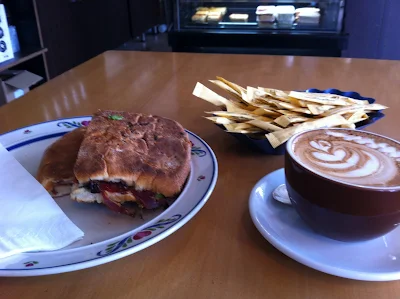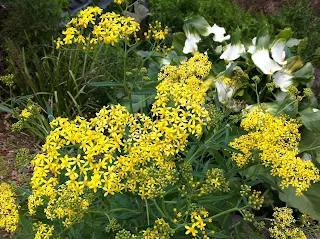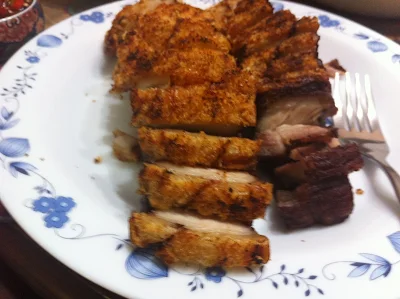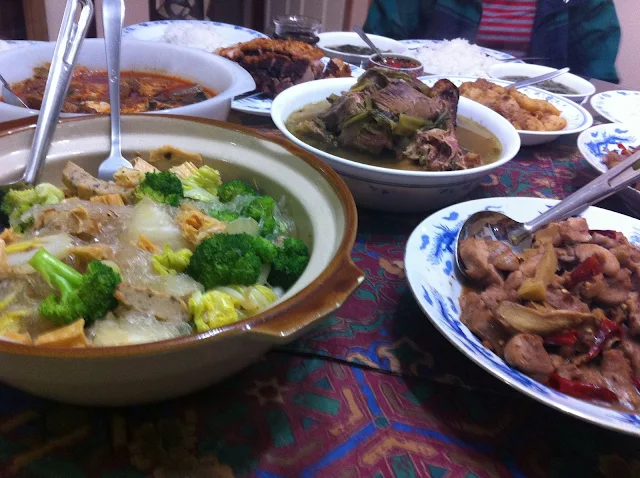First month for a new infant, Marisa - and customary practice for the Chinese community, with strong backgrounds in Malaysia and Singapore, is to mark the happy and significant occasion with the distribution to family and friends by the parents of a set that consists of chicken curry; a pair or red coloured hard boiled eggs, still on the shell; a traditional cake referred to as the
ang koo (literally, the red tortoise in the Fujian or Hokkien dialect) and a turmeric coloured and flavoured coconut milk steamed glutinous rice (the
nasi kunyit in the Malay language). In one swoop, this food set reflects and celebrates the multi-cultural influences of south-east Asia, incorporating the best elements in cuisine drawn from Indian, Southern Chinese, Thai and Indonesian influences.
The
ang koo encompasses two essential Chinese iconic symbols - the colour red for auspicious joy and the tortoise which signifies longevity. This cake can be accompanied by two peaches for a girl infant, or with two marbles for that of a baby boy. To make the
ang koo, one must first utilise the correct mould to imprint on the outer skin surface, and get ready ingredients as diverse as sugar, oil, mashed mung beans or mashed sweet potatoes, glutinous rice flour dough and wheat starch. Banana leaves are cut and used to form the underlay of this snack before being steamed.
The red coloured eggs (pictured above) remind me of Balkan traditions during the Orthodox Easter, celebrating new life, renewal and the on set of spring.
Awayofmind.blogspot offers a recipe for
nasi kunyit adapted from UnderWraps by Debbie Teoh below, acknowledgements to both:
Ingredients:
500g glutinous rice
1 tbsp ground turmeric (Kunyit serbuk)
3 pieces dried sour fruit
150ml coconut milk
1 tsp white peppercorns
1 tsp salt
Steps:
1. Soak washed rice in water mixed with ground turmeric and dried sour fruit slices overnight.
2. Wash and drain the soaked rice.
3. Combine coconut milk, peppercorns, salt and rice in a mixing bowl. Set aside for 1 hour for the flavours to infuse.
4. Steam (3) in the steamer for 20 minutes or until the rice is cooked.
With acknowledgements to nyonyafood.com, I reproduce their chicken curry recipe:
Ingredients:
1 Whole chicken (remove head, neck, feet and chopped into pieces)
200g Potatoes (peeled and cut into wedges)
200ml Thick coconut milk or to taste
1 sprig Curry Leaves (use only the leaves)
1 Star arise
1 cloves
1 cinnamon stick
5 tbsp Oil
1 ½ cup Water
Spice Paste (ground):
3 cloves Garlic
18 Shallots
12 Dried Chili (soaked and remove seeds)
15g Turmeric
15g Coriander seeds
1tsp Fennel
1tsp Cumin
20g Shrimp paste (toasted)
1 Lemongrass (white part only)
Seasoning
1 tbsp Salt
1 tsp Sugar
Method:
Heat up your wok, pour in 5 tbsp oil, sauté cinnamon stick, star anise and cloves, fry over low heat, add in spice paste and stir-fry until fragrant.
Add chicken, potatoes, curry leaves and fry well. Add in water, cover the pot, braise over low heat until chicken and potatoes are cooked well.
Add the thick coconut milk, salt and sugar. Continue to simmer in low heat for 20-30 minutes or until the chicken becomes tender. Remove and serve with white rice, bread, nasi kunyit, or roti jala.








































